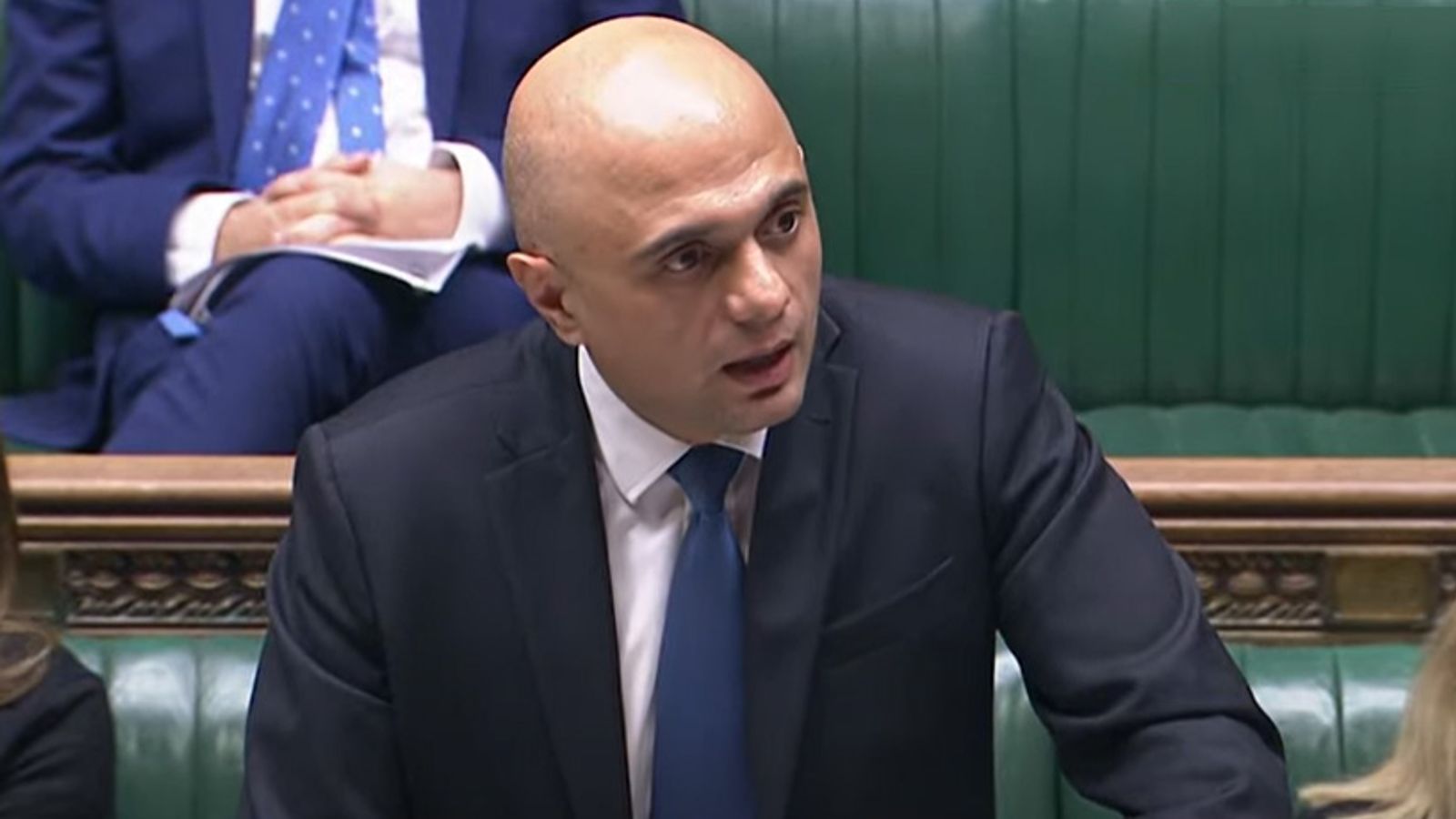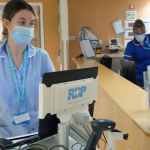There have been many striking numbers during this pandemic but few as striking as the one cited by Health Secretary Sajid Javid in the House of Commons yesterday.
He said that the UK Health Security Agency (UKHSA) had estimated that, as of that very day – 13 December – there were around 200,000 new Omicron infections.
The figure was so high that many of those who follow such things couldn’t quite get their heads around it.
Please use Chrome browser for a more accessible video player
Had Mr Javid misspoken? Had he made a mistake? Or, more ominously, was he in fact apprised of terrifying new intelligence suggesting the virus was spreading even faster than previously thought?
In the hours after the health secretary sat down, the UKHSA was initially not especially forthcoming, except to insist that the number was indeed correct and that it was a daily figure, not the cumulative number of infections.
COVID news live: PM faces big rebellion over Plan B rules
And, as it happens, the 200,000 was just for England; a number for the whole of the UK would have been even higher.
COVID: Schools see ‘very severe low attendance’ ahead of Christmas as Omicron variant spreads
COVID-19: How to volunteer to help the coronavirus booster jab drive
COVID-19: New needle-phobia friendly coronavirus vaccine could protect against virus mutations
So everyone assumed that this was a very big deal.
After all, that 200,000 number would represent comfortably the highest level of daily new infections during the pandemic (there may have been slightly higher levels in the very first wave, but the limited amount of epidemiological intelligence makes this hard to calculate).
It was, for obvious reasons, at the top of most television bulletins last night and on the front of almost every newspaper this morning.
Where did the UKHSA get the figure from?
It was not the result of new intelligence or new data. It was not a carefully-honed new model – the kind of thing using behavioural and virological programming sometimes churned out by members of SPI-M.
No: that 200,000 figure was more like a back-of-an-envelope calculation. A calculation based on a few pieces of public information anyone could have looked up.
Let’s go through it step by step. It begins with the numbers produced by the Office for National Statistics (ONS) each week on the number of infections across the country.
There’s a difference, note, between infections and cases – the data we get from the COVID dashboard each week.
Cases are the number of COVID tests coming back positive. But since not everyone gets symptoms and not everyone gets tested, infections are invariably a higher figure.
Please use Chrome browser for a more accessible video player
Consider this: on 21 November there were 35,000 new cases of COVID in England while the number of infections that same day was 78,000 – according to the ONS’s models, which are in turn based on a sample of the population.
So, in order to get to that 200,000 figure, the UKHSA did three things: first, it assumed that come early December when Omicron began to be detected in the country, the level of infections was still around 78,000, as per those ONS numbers.
Then, since at that point just over 20% of sequenced COVID tests looked like they were Omicron, it took that 78,000, called them Delta cases and then added an extra 20% or so (actually more like 23%) and called them Omicron.
Now it had a starting point: 23,000 Omicron cases as of 7 December. Then it did the final step, working out what would happen to that 23,000 if it rose exponentially.
At this point, it’s worth saying it’s not entirely clear quite how fast this new variant doubles in size (epidemiologists tend to talk about doubling the speed) except to say it is very fast indeed.
The figure was a rough understanding of current Omicron data
Last week the UKHSA said it thought it was doubling every 2.5 days. But some think it could be as fast as a two day doubling. Others have slower estimates.
When the UKHSA started multiplying that 23,000 number, it did so using one of the fastest doubling-time estimates I have yet seen: not just every two days but every 1.9 days.
That resulted in an extraordinarily rapid increase, meaning by 13 December those 23,000 would have indeed turned into 207,000 infections.
Lo and behold, that is how the health secretary got the number he quoted in the Commons yesterday.
It’s worth contemplating the way the UKHSA came up with this figure, if only to underline that for all that it took on the appearance of definitive data when it was plastered on front pages, it is ultimately just a rough extrapolation.
17 million cases on Christmas Day?
Moreover, such extrapolations can look very different if one takes different assumptions.
Let’s imagine Omicron was indeed doubling infections every 2.5 days rather than every two days. Doesn’t sound like much, does it? But it would mean that by yesterday we would have had 120,000 infections – a high number, certainly, but not 207,000. Not a record.
None of this is to say that Mr Javid shouldn’t have cited the number. These exercises are of use when one is dealing with a fast-moving situation and where the data isn’t coming in quick enough to give a sense of where we’re heading.
But they also have problems of their own. Consider: if Omicron carried on growing at the rate Mr Javid’s numbers were based on, on Saturday alone we would be seeing 1.3 million new infections.
Please use Chrome browser for a more accessible video player
On Christmas Day itself, there would be 17 million infections. And bear in mind these are just new daily infections we’re talking about: if you added up the cumulative number of people who would have caught Omicron by then you’d be talking about 55 million – the entire population of England.
You see, such extrapolations rapidly get ridiculous. No one seriously expects anything like that.
The question is at what stage the extrapolations become meaningless or, to put it another way, how long can infections carry on doubling at anything like the rate Mr Javid’s scary number was based on.
In South Africa, for instance, the doubling time has already dropped from two days to around nine days.
The point of all of this is not so much to say numbers like the 200,000 are meaningless; they give a sense of the possible real-time progress of the virus.
But they should be treated as what they are: back-of-envelope sums rather than definitive numbers.






















